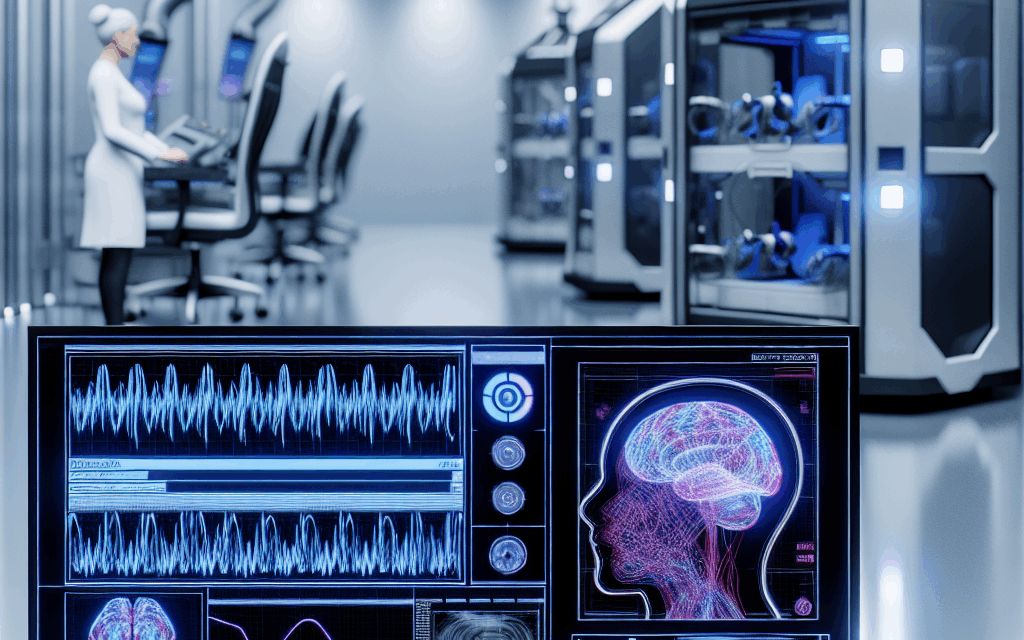Summary
AI-enhanced EEG technology is emerging as a promising tool for early detection of Alzheimer’s disease, potentially facilitating prevention efforts before symptoms appear. This shift from diagnostic confirmation to proactive intervention could transform clinical practices. This article delves into the technology’s integration into laboratory settings, offering practical insights for clinical laboratory technicians.
Key Takeaways
- AI-enhanced EEG technology can identify Alzheimer’s disease indicators years before symptoms manifest.
- Transitioning from diagnosis to prevention could change clinical diagnostic strategies.
- Understanding AI’s role in diagnostics is crucial for clinical laboratory technicians.
- Practical applications and techniques are discussed for better integration into existing workflows.
- Staying informed about technological advancements and regulations is essential for professionals in the field.
Recent advances in AI-enhanced EEG technology have opened new avenues in the early detection of Alzheimer’s disease. By identifying subtle changes in brainwave patterns that are invisible to the human eye, this technology offers a unique opportunity to shift healthcare strategies from a focus on confirmation and treatment to one prioritizing preemptive actions. Unlike traditional practices, where interventions occur after noticeable symptoms appear, AI-enriched EEG analyses enable laboratory technicians to detect physiological markers indicative of Alzheimer’s years in advance.
In practical terms, clinical laboratory technicians already familiar with standard EEG procedures can appreciate how AI applications integrate seamlessly into existing protocols. Such integration optimizes workflows by automating complex data analyses, leading to more efficient processing and higher accuracy. For example, tools powered by AI, such as automated machine learning models, can sift through vast data sets to extract meaningful insights, ultimately reducing human error and expediting decision-making processes.
AI in EEG Diagnostics: Clinical Relevance
AI-enhanced EEG technology offers significant clinical relevance, particularly in its capacity to shift Alzheimer’s diagnostic paradigms. By enabling early detection, medical professionals have the potential to intervene with lifestyle changes and tailored treatments long before traditional diagnostic measures would allow. As AI continues to evolve, techniques such as deep learning algorithms are being employed to improve the accuracy and speed of EEG data analysis.
The extended lead time provided by early detection can vastly improve patient care pathways. Integration of these AI systems into routine diagnostics could allow for personalized patient management strategies, emphasizing prevention over cure. For laboratory technicians, understanding both the technical and practical aspects of AI integration in EEG technology is critical to maintaining excellence in patient outcomes.
Furthermore, the continuous development of EEG-based AI applications has prompted updates in regulatory standards. By keeping abreast of these changes, clinical laboratory technicians can ensure their practices remain compliant with current guidelines while leveraging these advancements to refine diagnostic capabilities. Familiarity with the technology’s evolving landscape will also enhance technicians’ ability to collaborate with healthcare providers, ensuring a holistic approach to Alzheimer’s management.
The Road Ahead: Practical Applications and Considerations
For clinical laboratory technicians, the transition to incorporating AI-enhanced EEG technology involves both opportunities and challenges. The most immediate application is the technology’s ability to handle large volumes of EEG data rapidly and accurately, highlighting anomalies that indicate potential Alzheimer’s development. Adapting laboratory environments to accommodate AI tools may require additional training, but the long-term benefits—such as increased diagnostic efficiency and precision—justify the investment.
Practically speaking, protocols may need adjustments to harmonize with AI’s capabilities. This means adopting robust data security measures to protect sensitive patient information while ensuring seamless integration with existing electromagnetic systems and databases. Moreover, embracing ongoing education about AI-enhanced practices is essential for technicians to stay current with developments, fostering an environment of continuous improvement and professional growth.
Looking forward, collaboration between developers of AI tools and healthcare institutions will be crucial. Engaging in dialogue with these stakeholders can aid in the refinement of diagnostic tools tailored specifically to the needs of clinical laboratory technicians. By developing a comprehensive understanding of these tools, technicians can bridge the gap between theoretical advancements and practical application, enhancing patient care through early, proactive detection strategies.
Conclusion
AI-enhanced EEG technology offers a promising path forward in Alzheimer’s disease detection, presenting clinical laboratory technicians with new opportunities to shift from reactive diagnostics to preventative strategies. By adapting to technological advancements and maintaining compliance with evolving regulations, professionals in the field can significantly impact patient outcomes through early intervention and personalized care.





